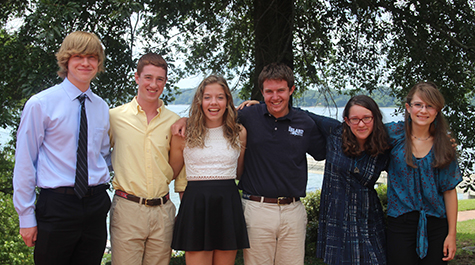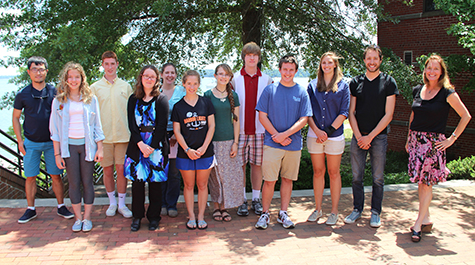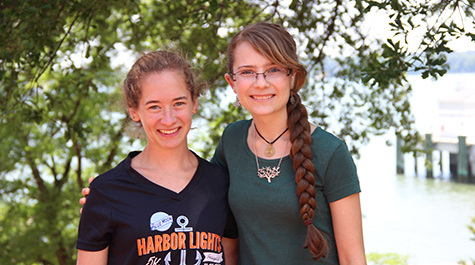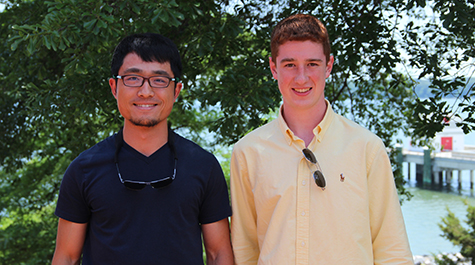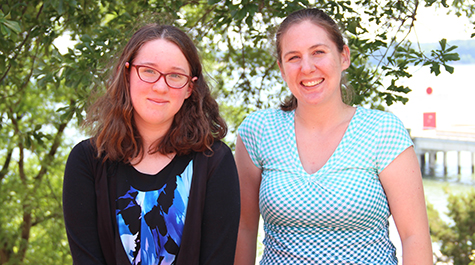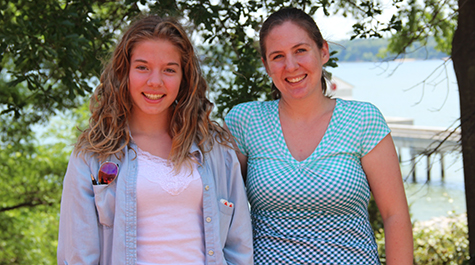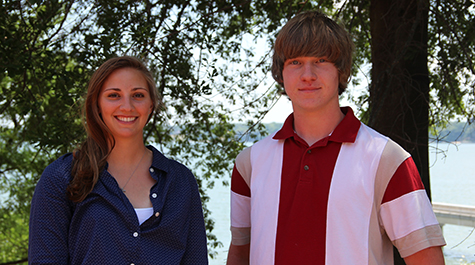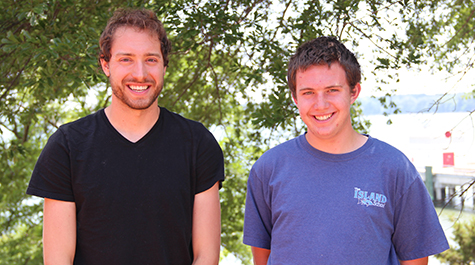VIMS Governor’s School students complete summer research
Six students from high schools throughout Virginia presented their summer research projects at the Virginia Institute of Marine Science on July 17th in front of an audience of mentors, parents, peers, and members of the VIMS community.
VIMS Governor’s School—administered alongside a similar program at NASA Langley and provided in cooperation with Christopher Newport University—hosts six students who have demonstrated interest in and aptitude for marine science. The 4-week program has provided high-achieving high school students with experiences in marine research since 1993.
The students worked with faculty and student mentors at VIMS on a variety of research projects focused on everything from the effect of seagrass habitat on predator-prey interactions between blue crabs and clams, to exploring the relationship between the El Niño Southern Oscillation and Peruvian anchovy fisheries.
VIMS Research Associate Professor Rochelle Seitz, who has served as director of the Governor’s School since 2005, says the program is important because it gives the students first-hand experience in marine research, and helps them determine if this is a career they want to pursue in the future. “Each student gains a deeper understanding of their specific project and a greater appreciation for the challenges and rewards of marine research,” she says.
Valentina Lohr, a rising senior at the Thomas Jefferson High School for Science & Technology in Alexandria, completed an internship at Maryland’s Institute for Marine and Environmental Technology prior to coming to VIMS. “My internship research on finding a method of preventing algal blooms from forming without harming the ecological role of the organisms that cause them made me interested in furthering my research portfolio at VIMS,” she says.
This summer, Lohr worked with Seitz and graduate student Cassie Glaspie to study how declining seagrass coverage might influence blue crab and clam populations.
“In the future, I would like to start a bioinformatics company, combining computer science, electronics, and chemical and biomolecular engineering to create new technologies,” she says. “I hope to emphasize technologies that will solve environmental problems without changing the function of the ecosystems they impact.”
Joining Lohr in the VIMS program were Peter Aronson (Blacksburg High School, Blacksburg); Hayden McCloud (West Potomac High School, Alexandria); Katrina Napora (Broadway High School, Broadway); Willow Abshire Sims (Franklin County High School, Rocky Mount); and Sean Wilms (Ocean Lakes High School, Virginia Beach).
Like Lohr, Aronson has career goals rooted in environmental science. “I want to play a major part in solving problems and enforcing solutions for ocean-related environmental crises such as overfishing—especially of elasmobranchs—and ocean acidification,” he says.
Aronson—mentored by Seitz and graduate student Bruce Pfirrmann—studied the relative abundance and diversity of mobile fauna on restored oyster reefs, and then compared his findings to areas with no oyster reefs.
While still under Seitz' direction, the program was overseen by Pfirrmann who says, “The VIMS Governor’s School is so unique because the students experience the highs and lows of the research process. They get to feel the excitement of fieldwork, thrill of unexpected discovery, long hours of sample sorting and data analysis, and the challenge of presenting results clearly and elegantly. I was impressed by the ability, dedication, and curiosity of this year's participants, and am quite optimistic about their futures in marine science.”
A third student, Willow Abshire Sims, worked with Seitz and graduate student Melissa Karp to investigate the structural complexity of oyster reefs and how it affects the biomass of reef populations. Sims says she plans to pursue a career in conservation, hopefully with the Chesapeake Bay Foundation.
Sims says the VIMS Governor’s School appealed to her because she thought it would be a fantastic opportunity to learn more about the real world of marine science and research. “It certainly didn’t disappoint,” she says.
2015 Governor’s School Student Projects
- Willow Abshire Sims: The Effect of Structural Complexity on Biomass of Oyster Reef Communities. Mentors: Melissa Karp and Dr. Rochelle Seitz.
- Peter Aronson: Assessing the Abundance and Diversity of Finfish and Blue Crabs on Created Crassostrea virginica Oyster Reefs in the Great Wicomico and Lynnhaven Rivers. Mentors: Bruce Pfirrmann and Dr. Rochelle Seitz
- Valentina Lohr: The Effect of Seagrass Habitat on Predator - Prey Interactions between Blue Crab & Clam Species. Mentors: Cassie Glaspie and Dr. Rochelle Seitz.
- Hayden McCloud: Exploring the Relationship between El Nino - Southern Oscillation and Peruvian Anchovy Fisheries. Mentors: Daniel Wang and Dr. Donglai Gong.
- Katrina Napora: Comparison of Native Seagrass and the Exotic Macroalga Gracilaria vermiculophylla as Nursery Habitat for Juvenile Blue Crab Callinectes sapidus. Mentors: Megan Wood and Dr. Rom Lipcius.
- Sean Wilms: Identification of the Major Predators of Juvenile Blue Crabs in Seagrass Habitat. Mentors: Amanda Bromilow and Dr. Rom Lipcius.
Funded by the Center of Gifted Education at William & Mary and the Virginia Department of Education, VIMS’ Governor’s School is one of seven summer residential Governor’s Schools in Virginia. The schools provide gifted high school juniors and seniors with intensive educational experiences in visual and performing arts; humanities; mathematics, science, and technology; or through mentorships in marine science, medicine and health sciences, or engineering.

